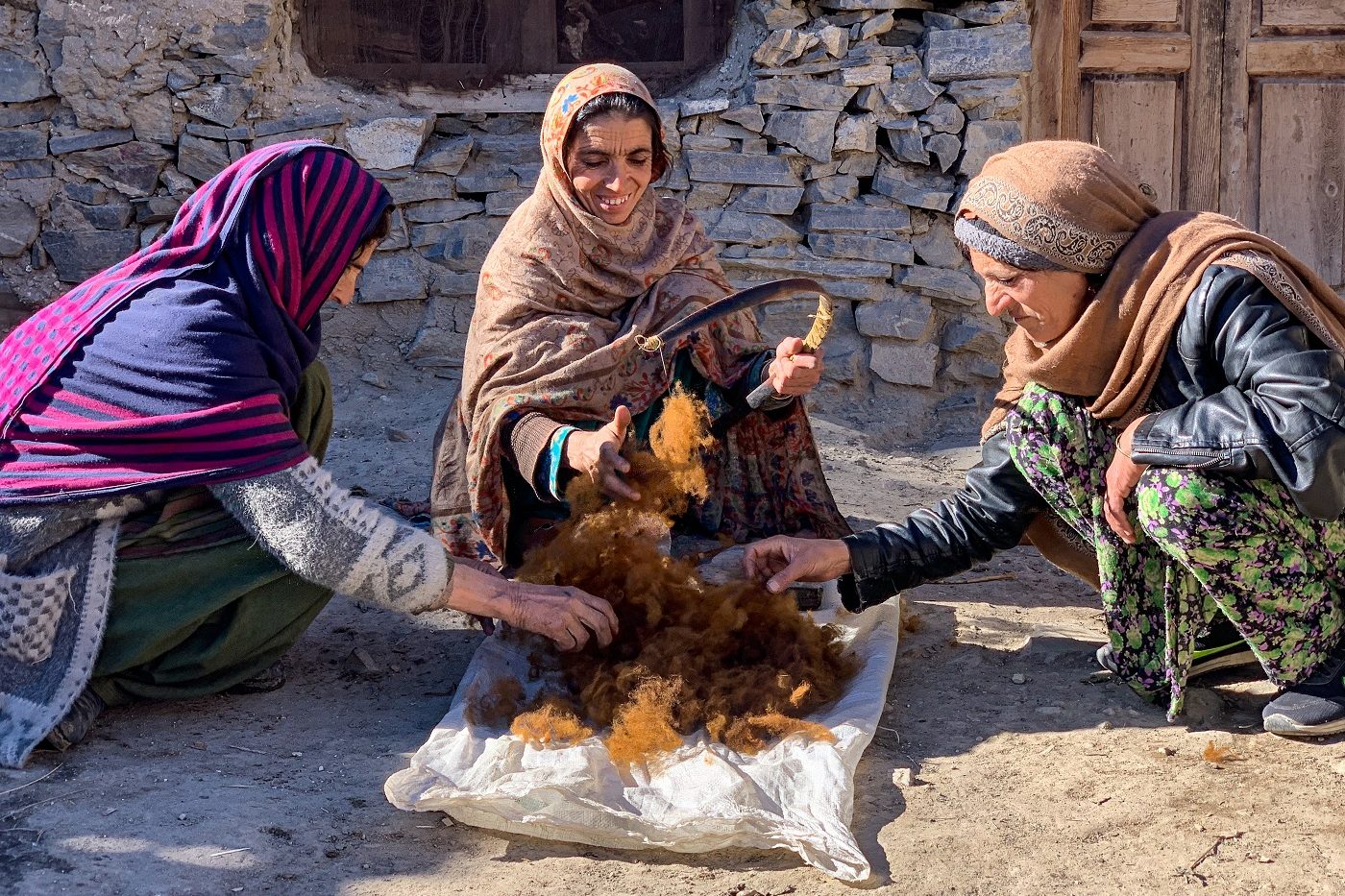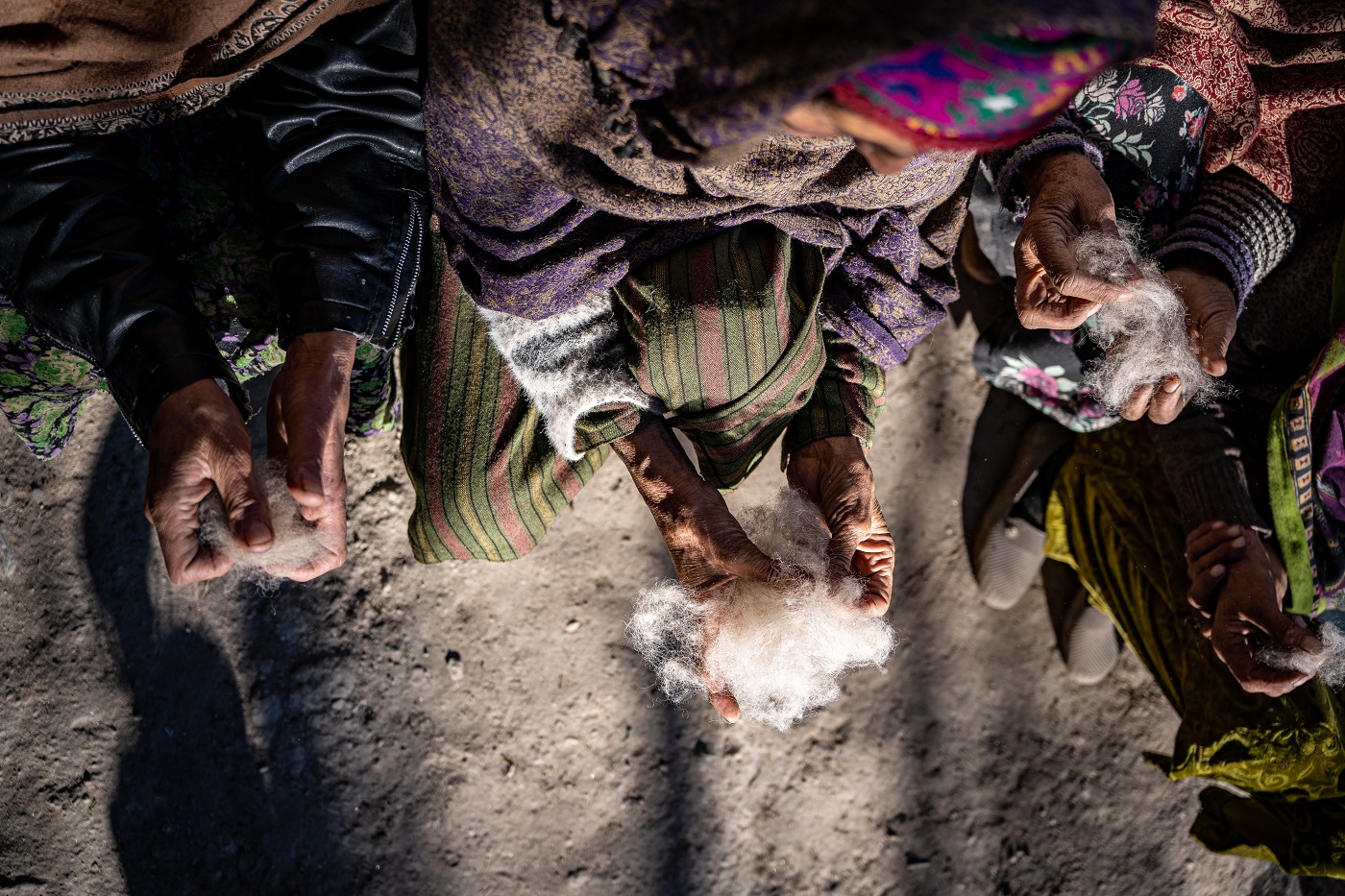In December 2022, project lead Adil Iqbal and his team went on their first field trip to the valley of Garam Chashma in Chitral, northwest Pakistan, to document the preparation of wool for the weaving of the renowned Chitrali shu fabric. Adil reflects on the two weeks the team spent in Garam Chashma, meeting individual makers and understanding the ways of life inherent to the creation of Chitrali shu.
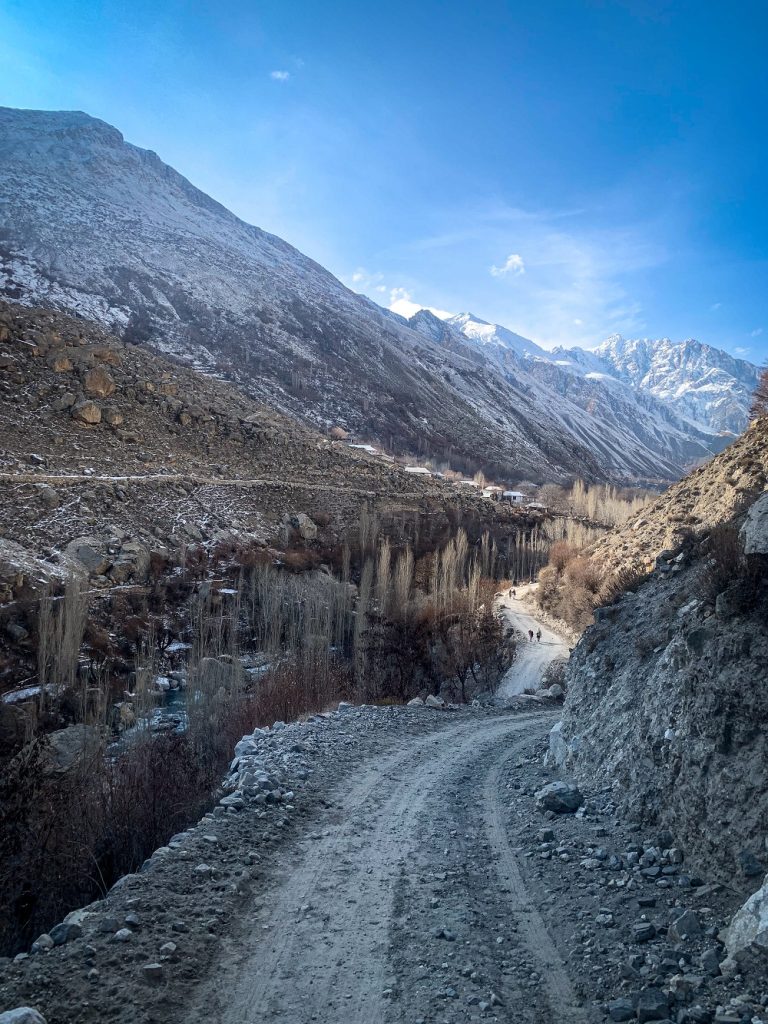
Garam Chashma is three hours by jeep from Chitral town. The track road is a rugged drive but worth the struggle. It led us to our field site, Royee, a remote village in Parabeg, a side valley of Garam Chashma. Royee has a tight-knit community of around 1000 inhabitants who were engaged in shu production. In the past, shu symbolised the essence of communal spirit and cooperation. Entire villages would come together to assist each other through every stage of the spinning and weaving process, fostering a shared sense of gratification and accomplishment. Regrettably, this cherished craft is now endangered, with only a few families continuing the practice.
My EMKP-funded project team includes research assistant Mansura Shams of the women’s cooperative ‘Kho & Kalashi’ in Chitral town and videographer Feroza Gulzar. Since the making of Chitrali shu spans different seasons, this time our focus was to document the stages of pre-carding, carding, teasing and spinning. This trip opened a breadth of techniques used by the makers that I had not seen before and that none of the humanitarian projects aiming to save this practice in the past, have ever mentioned.

“Documenting something that is slowly vanishing gives a sense of accomplishment”, Feroza reflected. “I felt this while filming. Royee is secluded from the rest of the world, providing peace when working there.” For us as outsiders, it was a privilege and sign of trust that the makers invited us to observe their work. The experience pushed our notion of ‘understanding something’: we were required to balance paying respect to the makers and paying attention to what they were doing to comprehend the elaborate processes that happened before us, the knowledge that drove them and the dexterity that almost instinctively guided the makers’ hands. There was a spiritual thoughtfulness and meditative quality above and beyond each activity. The collaboration and co-creation involved in the making of shu inspired me to think of the process as an artistic medium that expresses community spirit.
“During the interviews, many senior artisans were so passionate about shu making and said that they wanted to carry the wool to their graves.”
– Mansura Shams, project research assistant
I fondly remember meeting the shu maker Janat Bibi on a trip two years ago. She was delighted to see us again on this trip and invited us into her house. We nestled around the fire and she reminisced about her childhood days. Like most shu makers, she is a shepherd, and her entire life has been centred around wool, livestock and the mountains. As a young girl, Janat Bibi watched her parents raise sheep to make shu. The local Kailey breed of sheep has special value, and great prestige is attached to it. The sheep are reared in the highlands of Garam Chashma, and their delicate wool is turned into one of the finest woollen materials from the Hindukush region. In the past, she says, there were more flocks of sheep in the village, but gradually many families have sold their livestock as younger generations migrate to the cities for education and employment.
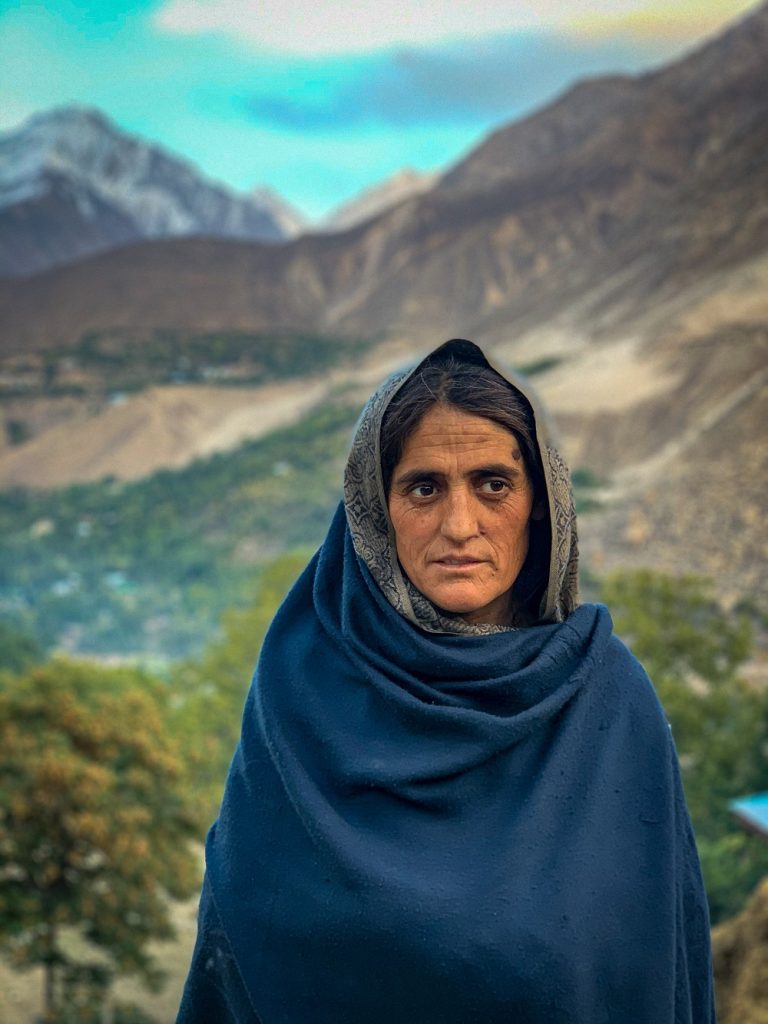
Janat Bibi recalls watching her mother light the lantern every evening, and she would assist her elder sisters in sorting and carding the wool all night. She acquired her skills by practising and imitating her community elders. Her mother advised and taught her to perform the same duties at her husband’s home after marriage.
Selling the shu supported her entire family; it provided their children with basics like rice and flour and helped them purchase additional food supplies such as oil and tea. “Shu had a lot of barakat (prosperity)” explained Janat Bibi. “The income brought positivity, health and wellbeing to the entire family.”
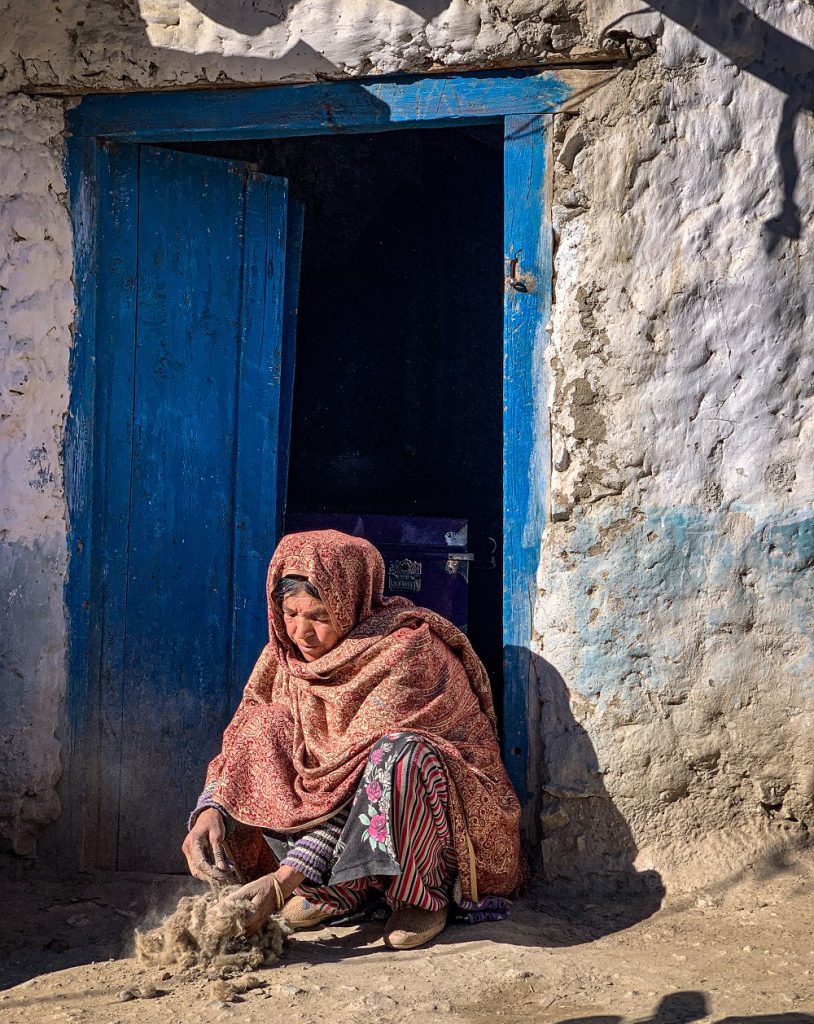
Shu maker Bibi Nisa demonstrated pre-carding activities for us. She explained that it is important to handle the delicate wool carefully right from the beginning. Typically, there is moisture and grease in the fibres. To help it dry, white soil (puchuti) obtained from soft and sandy rocks is sprinkled and mixed with the wool. Bibi Nisa mentioned that this task used to be done jointly by a mother and daughter, creating a special bond. She recalled that despite the dirt from the soil going into her eyes and mouth, she carried on, which taught her patience and resilience.
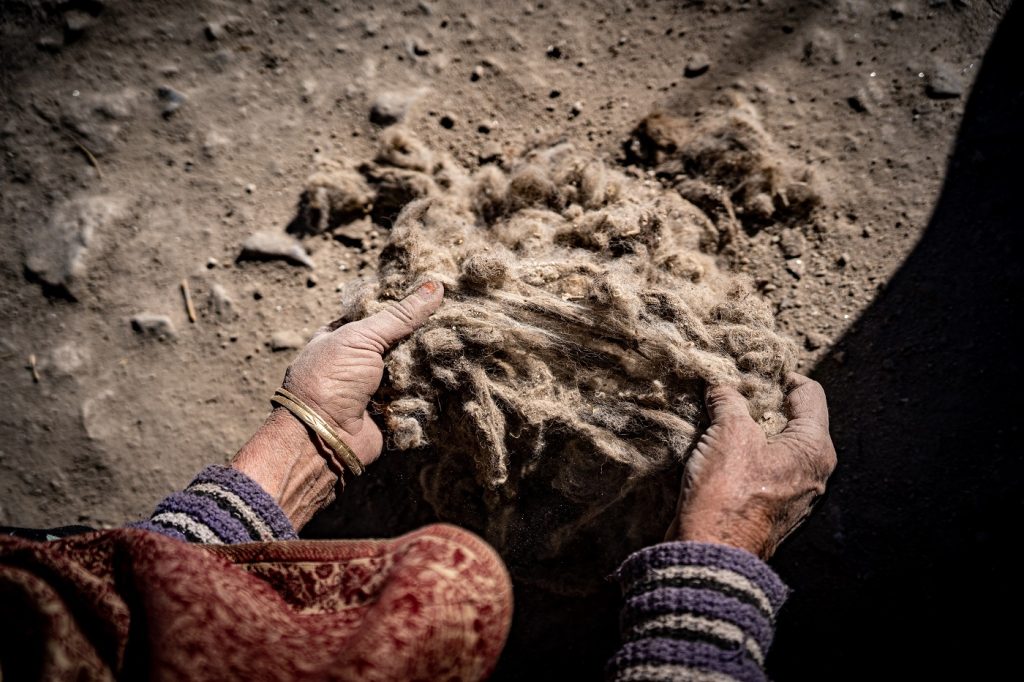
We were fortunate to meet Sahib Nisa, who demonstrated for us the use of a carding bow (dundini). It is made from a local tree (pasteli) which grows near the river. The wood needs to have a specific weight and be solid and moist so that it can be tied with a strong nylon thread or string into a bow. Unfortunately, no makers were left in the village to carry out this skilled task. Although new tools such as brush cutters and drum carders save time, Sahib Nisa emphasised that hand carding yields the best quality shu. As she explained, during the carding process, the fibres are intermixed, the wool thinned and prepared into small balls. She also checks that the soil has been brushed out.
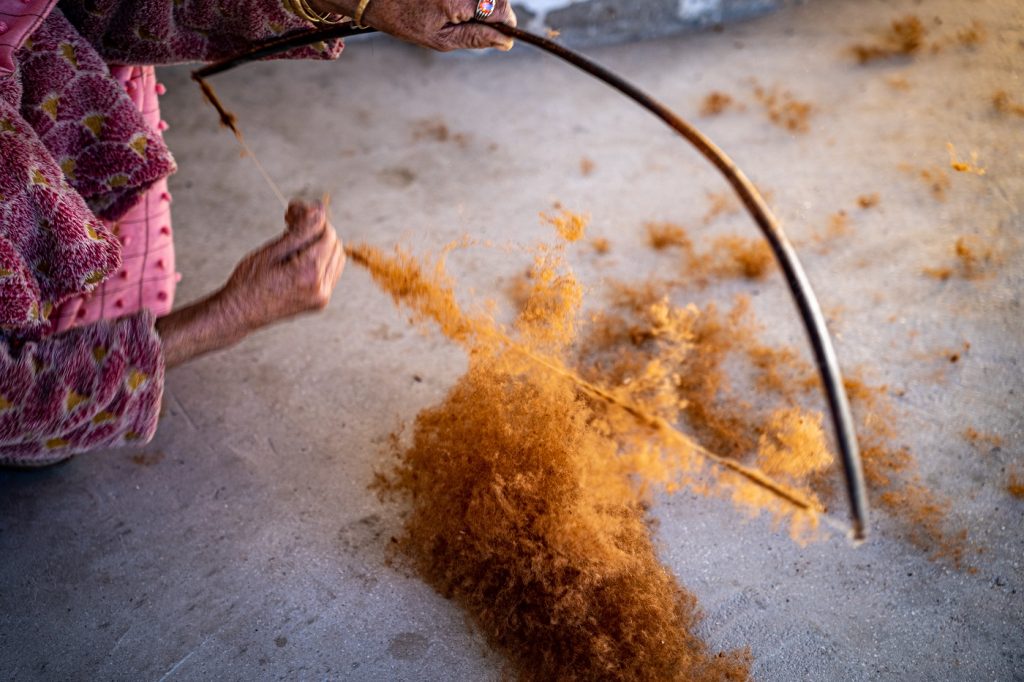
After being carded, the wool is kept in covered baskets (warketi) and distributed among the women of the family for teasing. A handful of woollen fibres being teased is called dappi. Once the teasing is finished, the wool is called pizhonu and passed on to the spinner. Sahib Nisa described how, “The process of carding (dundik) helped with my mental health. The woollen fibres, gently drifting into the atmosphere, created tranquillity and calmness.”
The warketi basket is made from the bark of a willow tree and stitched with traditional designs. Shu maker Khushtan shared a memory that many women in the past used to get a warketi as a gift from their mothers-in-law. A bride’s task was to get through the wool and demonstrate her craft skill. She was incentivised by a necklace or a ring hidden at the bottom of the basket.
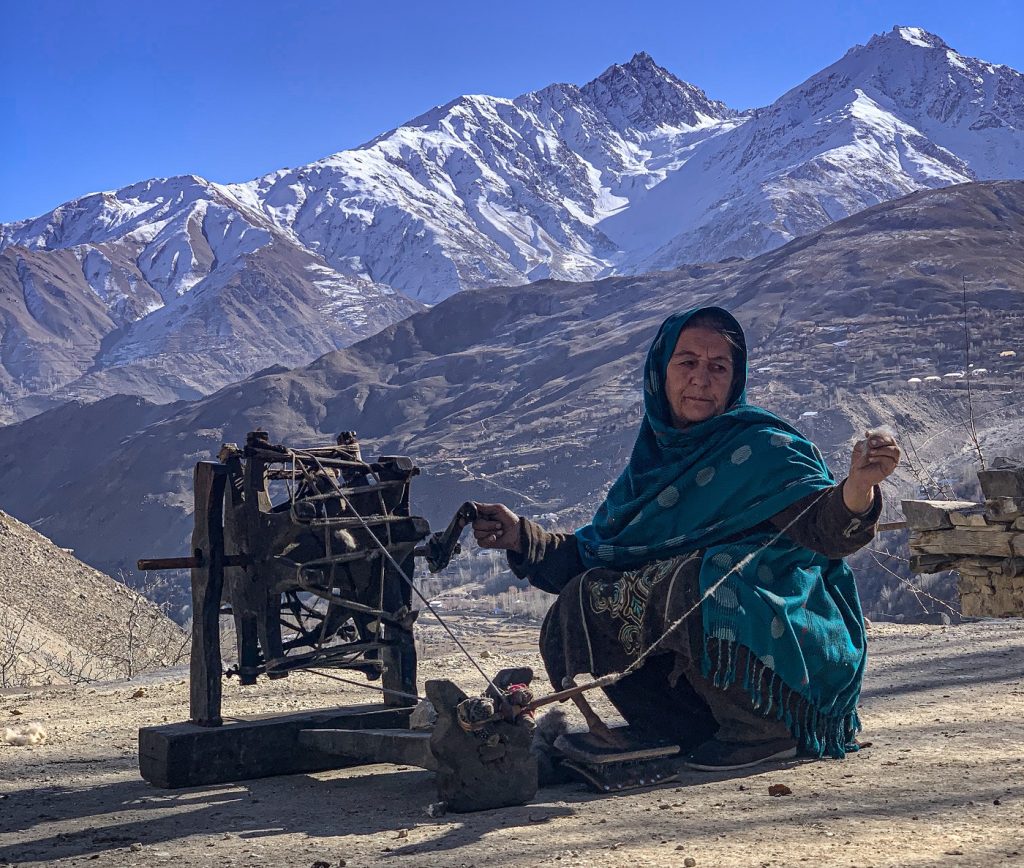
Khushtan also told us about the importance of geeve, a social gathering to work as a group. The local women used to come together on the long winter nights to card, tease and spin the wool. She remembered geeve as an exciting event that united the community, accompanied by stories, jokes, songs, poems and food. “The women would boil black beans (a local delicacy) from Gobor, a nearby village, and give them to us; sometimes they used to make shupa halwa (a traditional Chitrali dish made from wheat and walnuts).”
It was a creative way of making shu, where craft making, play and ritual came together. Janat Bibi recalled how, “Geeve provided a unique opportunity to the youngsters to learn collectively from skilled elderly women in addition to their own teachers at home.” Since men were not allowed in the geeve event, it gave the women more freedom and a space to express themselves. Unfortunately, geeve is no longer practised.

As this trip came to an end, the women surprised us with a special gift. They decided to get together and show us how this gathering would have been practised in the past. The event was a bit bittersweet for the women as it brought memories of community coming together. According to Bibi Nisa, geeve had many psychological benefits as it helped tackle loneliness during the long winters and was a safe space for women to support each other.
We left looking forward to our next field trip in May 2023, which will focus on documenting the process of washing, shearing, warping and weaving.

